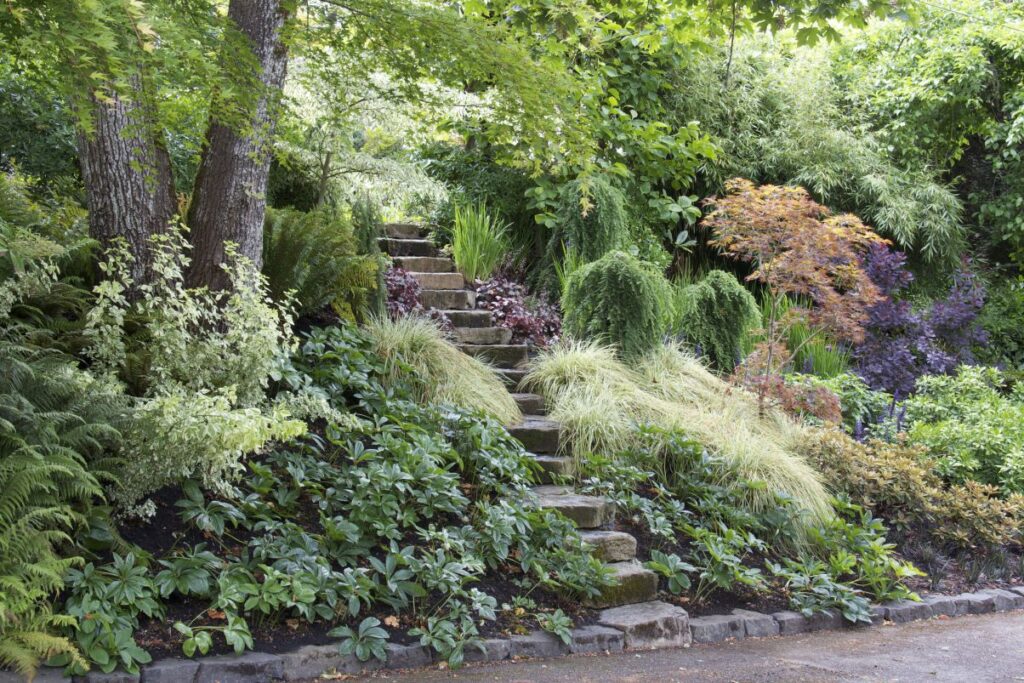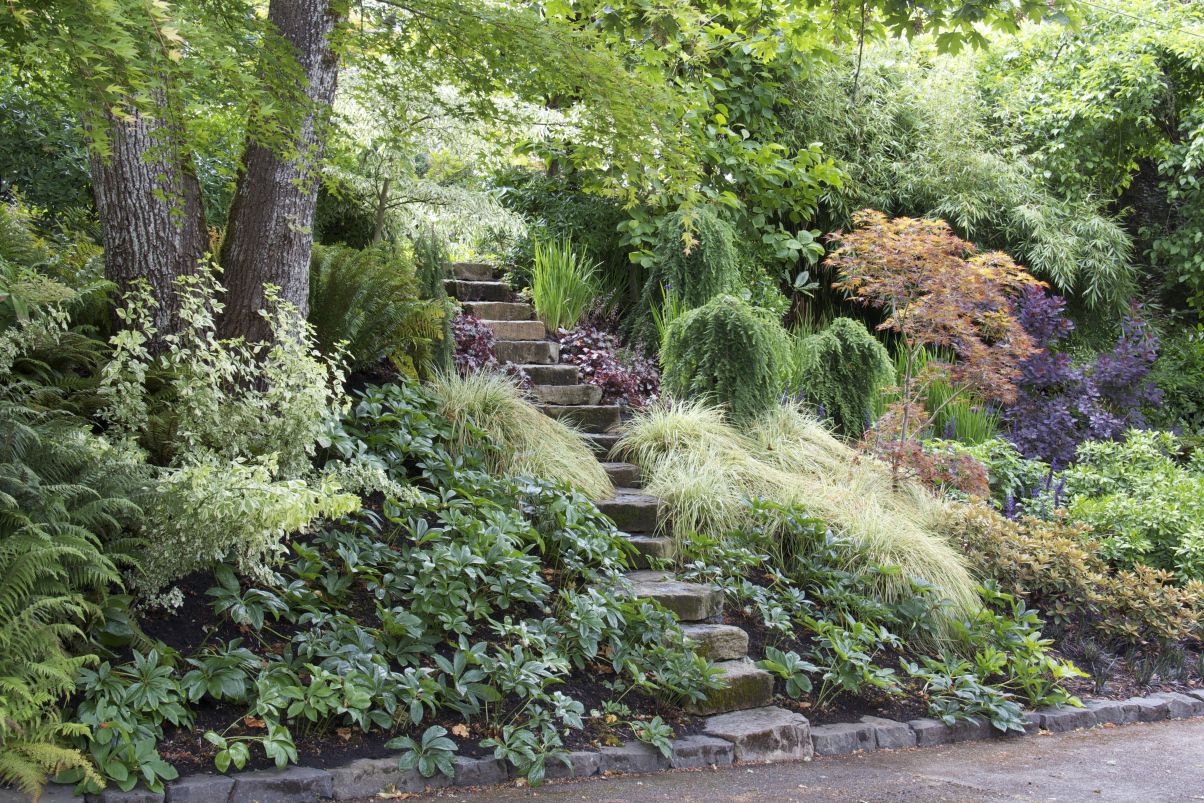
Hill Landscaping: Creating Stunning and Sustainable Slopes
Hill landscaping presents unique challenges and opportunities. Transforming a sloping yard into a functional and aesthetically pleasing space requires careful planning, innovative techniques, and a deep understanding of soil dynamics. This article explores the key considerations, design principles, and practical steps involved in successful hill landscaping, turning potential problems into breathtaking features. Whether you’re dealing with erosion control, drainage issues, or simply aiming to enhance the visual appeal of your property, effective hill landscaping can significantly increase its value and enjoyment.
Understanding the Challenges of Hill Landscaping
Before embarking on any hill landscaping project, it’s crucial to acknowledge and address the inherent challenges. These challenges often revolve around:
- Erosion Control: Slopes are naturally susceptible to erosion, especially during heavy rainfall. Uncontrolled erosion can lead to soil loss, damage to surrounding structures, and environmental degradation.
- Drainage Issues: Improper drainage can cause water to accumulate at the base of the slope, leading to flooding, foundation damage, and mosquito breeding grounds.
- Accessibility: Working on a steep slope can be physically demanding and require specialized equipment or techniques.
- Plant Selection: Not all plants are suitable for slopes. Choosing the right plants that can thrive in the specific soil conditions and provide effective ground cover is essential.
Key Considerations for Hill Landscaping Design
Effective hill landscaping begins with a well-thought-out design that addresses the unique characteristics of the site. Here are some key considerations:
Slope Assessment
The first step is to thoroughly assess the slope. This involves determining the steepness of the slope, the type of soil, the amount of sunlight it receives, and any existing vegetation. This information will inform the design and plant selection process.
Terracing
Terracing is a common technique used in hill landscaping to create level platforms or steps on the slope. Terraces not only reduce erosion but also provide more usable space for gardening, seating areas, or walkways. Retaining walls, made of materials such as stone, timber, or concrete, are typically used to support the terraces.
Retaining Walls
Retaining walls are crucial for stabilizing slopes and preventing soil erosion. They come in various styles and materials, each with its own advantages and disadvantages. Gravity walls rely on their weight to resist the pressure of the soil, while reinforced walls use geogrids or other reinforcing materials to increase their strength. The choice of retaining wall material and design will depend on the height of the wall, the soil conditions, and the desired aesthetic.
Drainage Solutions
Proper drainage is essential for preventing water damage and maintaining the stability of the slope. Surface drainage systems, such as swales and channels, can be used to direct water away from the slope. Subsurface drainage systems, such as French drains, can be installed to collect and remove excess water from the soil. [See also: French Drain Installation Guide]
Plant Selection for Hill Landscaping
Choosing the right plants is crucial for erosion control, aesthetics, and long-term sustainability. Plants with deep, fibrous root systems are particularly effective at holding soil in place. Ground cover plants, such as creeping thyme, sedum, and vinca, can provide a dense mat of vegetation that protects the soil from erosion. Native plants are often a good choice because they are adapted to the local climate and soil conditions. Consider the mature size of the plants and their water requirements when making your selections.
Practical Steps for Hill Landscaping
Once the design is finalized, the next step is to implement the hill landscaping plan. This involves a series of practical steps, including:
Site Preparation
Before starting any construction or planting, it’s important to prepare the site. This may involve removing existing vegetation, grading the slope, and installing drainage systems. It’s also a good idea to test the soil and amend it as needed to improve its fertility and drainage.
Retaining Wall Construction
Building retaining walls requires careful planning and execution. It’s important to follow local building codes and regulations and to ensure that the walls are properly designed and constructed to withstand the pressure of the soil. [See also: Retaining Wall Construction Best Practices]
Planting
When planting on a slope, it’s important to use proper planting techniques to ensure that the plants get established quickly. Dig holes that are large enough to accommodate the root ball and amend the soil with compost or other organic matter. Water the plants thoroughly after planting and mulch around them to help retain moisture and suppress weeds.
Irrigation
Providing adequate irrigation is essential for the success of any hill landscaping project. Drip irrigation systems are often the most efficient way to water plants on a slope because they deliver water directly to the roots, minimizing water loss due to evaporation and runoff. Consider installing a rain sensor to automatically adjust the irrigation schedule based on rainfall.
Maintenance
Hill landscaping requires ongoing maintenance to ensure its long-term health and beauty. This includes regular weeding, pruning, fertilizing, and mulching. It’s also important to monitor the slope for signs of erosion and to take corrective action as needed. Regularly inspect retaining walls for cracks or other signs of damage and repair them promptly.
Sustainable Hill Landscaping Practices
Sustainable hill landscaping practices aim to minimize the environmental impact of the project while creating a beautiful and functional landscape. Here are some key principles of sustainable hill landscaping:
Use of Native Plants
Native plants are adapted to the local climate and soil conditions, requiring less water, fertilizer, and pesticides than non-native plants. They also provide habitat for native wildlife and help to preserve biodiversity.
Water Conservation
Water conservation is essential for sustainable hill landscaping. This can be achieved through the use of drought-tolerant plants, efficient irrigation systems, and rainwater harvesting techniques. [See also: Rainwater Harvesting for Garden Irrigation]
Soil Conservation
Soil conservation is crucial for preventing erosion and maintaining the fertility of the soil. This can be achieved through the use of cover crops, mulching, and terracing.
Integrated Pest Management
Integrated pest management (IPM) is a holistic approach to pest control that minimizes the use of pesticides. IPM involves monitoring for pests, using cultural practices to prevent pest problems, and using biological controls when necessary.
The Benefits of Professional Hill Landscaping
While it’s possible to tackle hill landscaping as a DIY project, hiring a professional landscaping company can offer numerous benefits. Professionals have the expertise, experience, and equipment to handle complex projects efficiently and effectively. They can also provide valuable advice on design, plant selection, and maintenance. Investing in professional hill landscaping can save you time, money, and frustration in the long run.
Conclusion
Hill landscaping is a challenging but rewarding endeavor. By understanding the challenges, considering the key design principles, and following sustainable practices, you can transform a sloping yard into a stunning and sustainable landscape. Whether you choose to tackle the project yourself or hire a professional, the results will be well worth the effort. Effective hill landscaping not only enhances the beauty and value of your property but also contributes to a healthier environment. Consider how hill landscaping can transform your outdoor space into a functional and aesthetically pleasing oasis. Remember to choose plants that thrive on hillsides and provide adequate drainage. With careful planning and execution, your hill landscaping project can be a resounding success. The key to successful hill landscaping is thorough preparation and ongoing maintenance. Embrace the unique challenges and opportunities that hill landscaping presents and create a landscape that you can enjoy for years to come. Good hill landscaping increases property value. Professional hill landscaping helps with drainage. Sustainable hill landscaping protects the environment. Consider all aspects of hill landscaping before starting.

